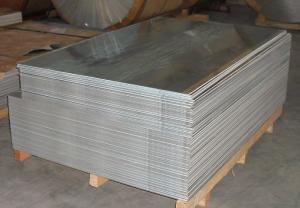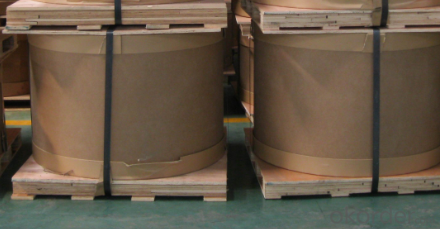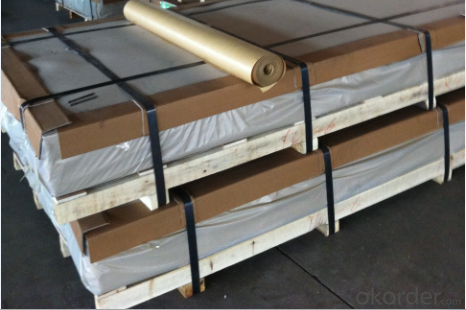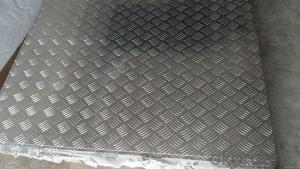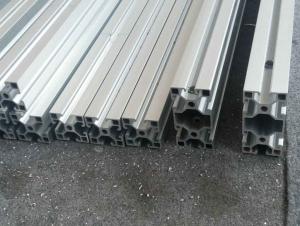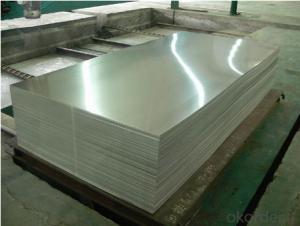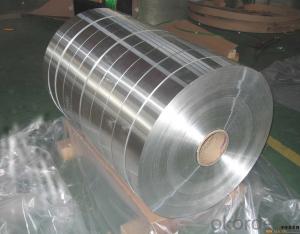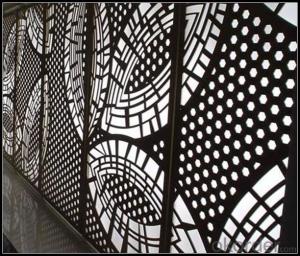Aluminum Alloy Sheet for Construction and Semi Trailer Wall Application
- Loading Port:
- Shanghai
- Payment Terms:
- TT or LC
- Min Order Qty:
- 6 m.t.
- Supply Capability:
- 4000 m.t./month
OKorder Service Pledge
OKorder Financial Service
You Might Also Like
1.Structure of Product Description
Cold rolled aluminum sheet is widely used in the field of construction field and decoration field, etc.
There are many different grades, such as: 1000 series, 2000 series, 3000 series, 5000 series, 6000series, etc. The detailed grade are as follows: 1010, 1050,1060,1100, 2024, 3003, 3005, 3105, 5052,5754,5083,6061,6063,8011, etc.
The temper is include H14, H22, H24, H44,H112,H114,etc.
2. Main features of the product
a.Competitive price
c. Shortest service.
3. Image.
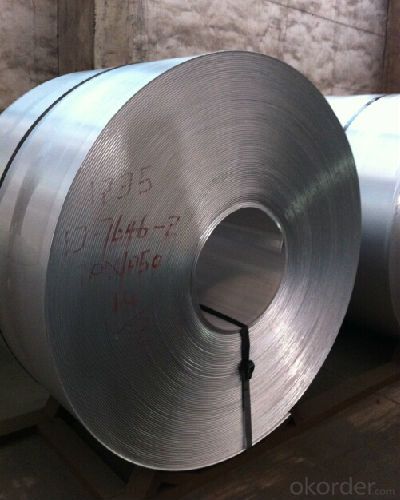
4. Product detailed sizes:
1000mm*2000mm, 1219mm*2438mm,1220mm*2440mm, 1250mm*2500mm,1500mm*3000mm, etc.
5. FAQ:
What is the quality standard?
---Usually our standard is GB3880-2006 or others.
What is the width range?
---It is from 1000mm to 2500mm, etc
Where is your client from?
---Normally it is from Japan, USA, ENGLISH, SINGAPORE, ETC.
What is your mainly products?
---Normally they are aluminum sheet, checkered sheet, mirror finish aluminium sheet, aluminum casting coil, etc.
- Q: This question asks for the steps to take in order to accurately measure the dimensions of an aluminum sheet before purchasing one.
- <p>To measure the dimensions of an aluminum sheet for purchase, first, ensure you have a measuring tape or a ruler. Measure the length and width of the sheet from one corner to the opposite corner, making sure to measure along the longest and widest sides. Record these measurements in the same unit of measurement used by the supplier (commonly inches or centimeters). If the sheet is not a perfect rectangle, measure the diagonal to confirm the dimensions. Note any irregularities or variations in thickness that might affect the intended use. Once you have these measurements, compare them with the available options from the supplier to select the appropriate size.</p>
- Q: Can aluminum plate resist acid and alkali?
- The metal oxide film changes the surface state and properties, such as surface coloring, corrosion resistance, abrasion resistance and hardness, and metal surface protection. For example, aluminum anodizing, the aluminum alloy placed in the corresponding electrolyte (such as sulfuric acid, chromic acid, oxalic acid, etc.) as an anode, under certain conditions and applied electricity under the electrolysis. Anodized aluminum or its alloy, formed on the surface of alumina thin layer, its thickness is 5~20 microns, anodized aluminum or its alloy. Therefore, the surface hardness and wear resistance of the aluminum alloy were greatly improved by the treatment process.Shanghai Ai Li AI metal materials, dedicated to serve you.
- Q: What the glue of L solidified aluminum and fast acrylic plate, solid glue?
- Aluminum and acrylic adhesive, if you want to achieve high strength without any effect, can be bonded with KD-5603 trace glue, but this should be with the help of UV curing light curing, if there is no UV curing light, the sun is strong weather, stick in the sun after 30 minutes can be the bonding effect of glass panel; the specific effects can refer to the general glass coffee table with four Aluminum Alloy column, don't see any traces of adhesive;
- Q: Explain the distinction between aluminum sheets based on their thickness.
- <p>Aluminum sheets with different thicknesses primarily differ in their strength, weight, and applications. Thicker sheets offer greater strength and rigidity, making them suitable for structural applications or heavy-duty uses. In contrast, thinner sheets are lighter and more flexible, ideal for applications requiring formability or where weight is a concern, such as in the automotive or aerospace industries. The choice of thickness depends on the specific requirements of the project, including load-bearing needs, durability, and aesthetic considerations.</p>
- Q: What are the different methods of punching aluminum sheets?
- There are several methods of punching aluminum sheets, including manual punching using handheld tools, mechanical punching using presses, and CNC punching using computer-controlled machines.
- Q: what's the size of gap while pressing 6mm aluminum sheet?
- choose the 8-10% of the thickness for two-sided gaps.
- Q: Is aluminum sheet corrosion-resistant?
- Indeed, aluminum sheet exhibits remarkable resistance to corrosion. When aluminum comes into contact with oxygen in the atmosphere, it develops a protective oxide layer that effectively hinders any further corrosion. This oxide layer acts as a shield, safeguarding the underlying metal against moisture, chemicals, and other detrimental corrosive agents. Moreover, aluminum demonstrates exceptional resistance to corrosion induced by saltwater, rendering it highly favored for marine applications. Nevertheless, it is crucial to acknowledge that specific circumstances, such as exposure to acidic or alkaline surroundings, can still induce corrosion on aluminum surfaces if not adequately preserved or shielded.
- Q: What is the maximum temperature aluminum sheets can withstand?
- The ability of aluminum sheets to tolerate high temperatures is influenced by various factors, such as the composition and thickness of the alloy, as well as the specific application and environment. Pure aluminum, in general, has a melting point of approximately 660 degrees Celsius (1220 degrees Fahrenheit), but its strength and rigidity decrease at lower temperatures. Commercial aluminum alloys, on the other hand, have higher melting points and can endure greater temperatures. For instance, the melting point of 6061 aluminum alloy is roughly 580 degrees Celsius (1076 degrees Fahrenheit), while the melting point of 7075 aluminum alloy is slightly higher at around 640 degrees Celsius (1184 degrees Fahrenheit). Nevertheless, it is important to highlight that the maximum temperature that aluminum sheets can handle without significant distortion or structural harm may be lower than their melting point. This is due to the fact that aluminum's mechanical properties and strength deteriorate at elevated temperatures. When using aluminum sheets in applications involving high temperatures, it is crucial to consider the specific alloy and its thermal characteristics, as well as any potential alterations in strength, hardness, or other pertinent properties that may occur at elevated temperatures. Consulting material specifications, engineering guidelines, or seeking advice from metallurgical experts can provide more accurate and specific information regarding the maximum temperature capabilities of aluminum sheets for a particular application.
- Q: Can aluminum sheets be used for heat lamps?
- Yes, aluminum sheets can be used for heat lamps. Aluminum is a good conductor of heat, meaning it can effectively transfer and distribute heat. This property makes it suitable for use in heat lamps, which require efficient heat distribution to effectively warm objects or spaces. Additionally, aluminum is lightweight, durable, and has a high melting point, which makes it a practical choice for heat lamp applications.
- Q: Can 101 aluminum sheets be recycled?
- Yes, 101 aluminum sheets can be recycled.
Send your message to us
Aluminum Alloy Sheet for Construction and Semi Trailer Wall Application
- Loading Port:
- Shanghai
- Payment Terms:
- TT or LC
- Min Order Qty:
- 6 m.t.
- Supply Capability:
- 4000 m.t./month
OKorder Service Pledge
OKorder Financial Service
Similar products
Hot products
Hot Searches
Related keywords
